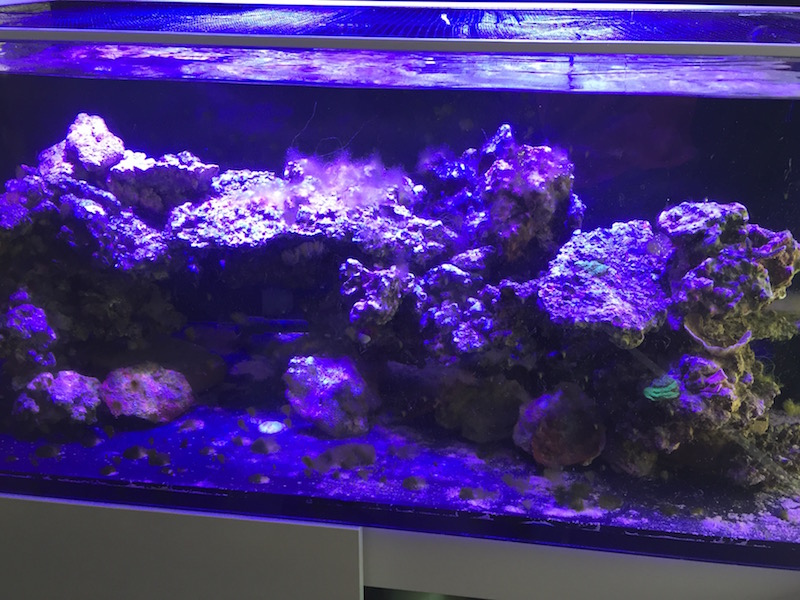Question: I recently did a 25-percent water change in my reef aquarium, and later that same day a film of green algae appeared on the glass. I cleaned it off with an algae magnet only to have it reappear just a few hours later. That was about a week ago. The algae film seems to be getting a little lighter every day, but I’m still having to clean up algae. Have you ever heard of this happening? What could be the cause?
-Personal communication from fellow hobbyist
Answer: I’ve not only heard of this happening, but I’ve also experienced it firsthand on more than one occasion in my many years as a hobbyist. The broad explanation for the bloom you’re experiencing is that some aspect of your water-change procedure is either introducing or liberating the dissolved nutrients that are fueling the algae. This may seem counterintuitive considering the whole point of water changes is to replace water that contains dissolved nutrients/pollutants with water that doesn’t, but it can happen in various ways. Let’s explore the more common ones:
First, what type of source water are you using when you mix up a batch of salt water? Are you using plain dechlorinated tap water or are you first purifying the water, e.g. through a reverse-osmosis/deionization (RO/DI) system? If you’re simply using dechlorinated tap water, that could very well be your answer right there. Tap water can contain a wide variety of nutrients and contaminants that may be deemed safe for people to drink (arguably) but aren’t ideal for reef systems. If, for example, your municipal water supply contains nitrate and/or phosphate, you’re essentially fertilizing algae with each water change and freshwater top-off. A good RO/DI system will remove the vast majority of impurities and, thereby, eliminate a lot of guesswork.
If you’re already using RO/DI to purify your source water, you’ll also want to make sure the system is doing its job as well as it should. The various components do need to be replaced at manufacturer-recommended intervals (or more frequently depending on factors such as the level of usage and the quality of the source water) to maintain peak performance. An inexpensive TDS (total dissolved solids) meter will help you determine if the level of contaminants is rising to an unacceptable level in your product water.
Another factor to consider is the salt mix itself. Quality synthetic salt mixes are nitrate- and phosphate-free, but not all salt mixes are created equal in this regard. If you’re using RO/DI water from a quality, well-maintained system and testing indicates the presence of nitrate and/or phosphate in your salt water before it’s added to the tank, there’s a good chance the salt mix is introducing these nutrients.
Your aquarium substrate, if you have one, is yet another factor to consider. Disturbing the substrate, e.g. when stirring or vacuuming, can liberate trapped nutrients into the water column, fueling algal growth. I’ve personally observed this problem in systems that have a larger-grain-size substrate, which can trap lots of detritus, as well as in systems with a finer substrate that’s not deep enough to promote denitrification.
Last but not least, check out your sump (again, if you have one) to make sure it’s clean. Being the lowest point in the aquarium system, sumps can collect a lot of detritus over time, especially if they’re situated out of sight and out of mind. Then, if you stir up the detritus during a water change—for instance when removing a component for cleaning—a lot of that nutrient-rich gunk can cloud the water and get pumped right into the display tank when you power everything back up, thus fueling an algal bloom.
The good news is, the bloom should eventually subside once the introduced/liberated nutrients that are fueling it get used up. Nonetheless, you’ll want to identify the source of the problem and remedy it so this scenario doesn’t repeat itself every time you perform a water change.



